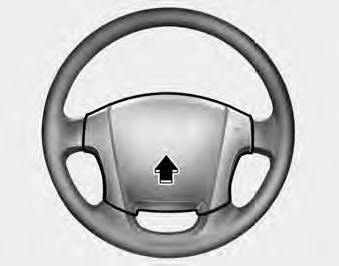Steering wheel
Power steering
Power Steering uses energy from the
engine to assist you in steering the
vehicle. If the engine is off or if the
power steering system becomes
inoperative, the vehicle may still be
steered, but it will require increased
steering effort.
Should you notice any change in the effort required to steer during normal vehicle operation, have the power steering checked by an Authorized Kia Dealer.
NOTICE
ŌĆó Never hold the steering wheel
against a stop (extreme right or
left turn) for more than 5 seconds
with the engine running. Holding
the steering wheel for more than 5
seconds in either position may
cause damage to the power steering
pump.
ŌĆó If the power steering drive belt breaks or if the power steering pump malfunctions, the steering effort will greatly increase.
NOTICE
If the vehicle is parked for extended
periods outside in cold weather
(below -10┬░C/14┬░F), the power steering
may require increased effort
when the engine is first started. This
is caused by increased fluid viscosity
due to the cold weather and does not
indicate a malfunction.
When this happens, increase the engine RPM by depressing accelerator until the RPM reaches 1,500 rpm then release or let the engine idle for two or three minutes to warm up the fluid.
Tilt steering (if equipped) A tilt steering wheel allows you to adjust the steering wheel before you drive.You can also raise it to the highest level to give your legs more room when you exit and enter the vehicle.
The steering wheel should be positioned so that it is comfortable for you to drive, while permitting you to see the instrument panel warning lights and gauges.
WARNING - Steering
wheel
ŌĆó Never adjust the angle of
steering wheel while driving.
You may lose your steering control and cause severe personal injury or accidents.
ŌĆó After adjusting, push the steering wheel both up and down to be certain it is locked in position.

To change the steering wheel angle, pull down (➀) the lock release lever, adjust the steering wheel to the desired angle (➁), then pull up the lock-release lever to lock the steering wheel in place.
Be sure to adjust the steering wheel to the desired position before driving.

Horn
To sound the horn, press the horn
symbol on your steering wheel.
Check the horn regularly to be sure it operates properly.
CAUTION - Horn
ŌĆó To sound the horn, press the
area indicated by the horn
symbol on your steering
wheel (see illustration). The
horn will operate only when
this area is pressed.
ŌĆó Do not strike the horn severely to operate it, or hit it with your fist. Do not press on the horn with a sharp-pointed object.
See also:
Packed Cabin
But what the Forte five-door lacks in dynamic refinement is perhaps made up
for with creature comforts. Starting at $19,090, the five-door Forte SX has
everything from the $17,590 EXŌĆöincluding p ...
Overview
Kia introduced the all-new 2010 Kia Forte (pronounced for-tay) compact sedan
at the 2009 Chicago Auto Show. Forte blends Kia's exciting new design direction
under the tutelage of Peter Schreyer, K ...
Windows
(1) DriverŌĆÖs door power window switch
(2) Front passengerŌĆÖs door power window switch
(3) Rear door (left) power window switch
(4) Rear door (right) power window switch
(5) Window opening and ...


